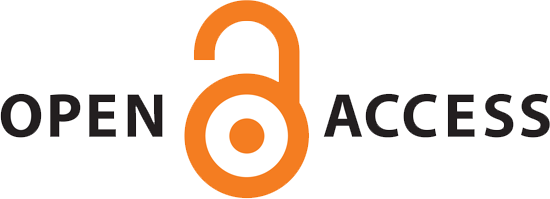Calibration of Computed Tomography System and Contrast Media Volume Tailoring for Optimal Hounsfield Units: A Theoretical and Experimental Study
Abstract
Purpose: The purpose of this study is to test the linearity of the CT system and ascertain the relationship between Hounsfield Unit ( ) values and weight/weight concentrations of iodine ( ) in mixtures. This aims to determine the iodine concentration thresholds for achieving effective contrasts with minimal iodine usage.
Materials and Methods: Aqueous solutions of Iopaque, with 300mgI/mL of iodine, were prepared for different weight/weight ( ) iodine concentrations and filled in a water-pool phantom, and the observations were taken at different kVps for 10 different CT machines. The variation of with was analyzed as, . From this, the necessary for getting a required value is estimated.
Results: It is found that HU(V) varies linearly with for low wi values, although the coefficients and vary widely between machines. For optimal HU enhancement, it was found that a 0.01% weight/weight concentration of iodine is adequate to produce an value of 450 at 80 kVp, while the corresponding concentration should be 0.025% weight/weight at 120 kVp.
Conclusion: Linear dependence of HU on wi helps to reduce the contrast media volume by estimating the iodine concentration, necessary for obtaining a required HU. It also revealed that lower kVps could yield adequate HU enhancement with a reduced contrast agent, thus potentially minimizing patient exposure to radiation and contrast media.
2- Yuxi C Dong et al., "Effect of gold nanoparticle size on their properties as contrast agents for computed tomography." Vol. 9 (No. 1), p. 14912, (2019).
3- Seitaro Oda et al., "Basic concepts of contrast injection protocols for coronary computed tomography angiography." Vol. 15 (No. 1), pp. 24-29, (2019).
4- Ahmad MR Baydoun, Ramsey F %J Materials Chemistry Hamade, and Physics, "Differentiating and predicting HU values of 12 aluminum alloys via X-ray computed tomography." Vol. 301p. 127611, (2023).
5- Christian Scherf et al., "Effects of iodinated contrast agent on HU-based dose calculation and dose delivered in iridium-192 high-dose-rate brachytherapy." Vol. 14 (No. 1), pp. 80-86, (2022).
6- Yogesh Thakur, Patrick D McLaughlin, and John R %J Current Radiology Reports Mayo, "Strategies for radiation dose optimization." Vol. 1pp. 1-10, (2013).
7- Marian S Solbak, Mette K Henning, Andrew England, Anne C Martinsen, Trond M Aaløkken, and Safora %J European Radiology Experimental Johansen, "Impact of iodine concentration and scan parameters on image quality, contrast enhancement and radiation dose in thoracic CT." Vol. 4 (No. 1), pp. 1-8, (2020).
8- Matthew S Davenport et al., "Use of intravenous iodinated contrast media in patients with kidney disease: consensus statements from the American College of Radiology and the National Kidney Foundation." Vol. 294 (No. 3), pp. 660-68, (2020).
9- Heiken JP, "Contrast safety in the cancer patient: preventing contrast-induced nephropathy." Cancer Imaging. Vol. 8 (No. Spec Iss A), p. S124–S127, (2008).
10- Andrik J Aschoff, Carlo Catalano, Miles A Kirchin, Martin Krix, and Thomas %J The British journal of radiology Albrecht, "Low radiation dose in computed tomography: the role of iodine." Vol. 90 (No. 1076), p. 20170079, (2017).
11- Jeong Hee Yoon, Jin Young Park, Sang Min Lee, Eun Sun Lee, Jae Hyun Kim, and Jeong Min %J Cancer Imaging Lee, "Renal protection CT protocol using low-dose and low-concentration iodine contrast medium in at-risk patients of HCC and with chronic kidney disease: a randomized controlled non-inferiority trial." Vol. 23 (No. 1), p. 100, (2023).
12- Alberto Farolfi et al., "Does the time between CT scan and chemotherapy increase the risk of acute adverse reactions to iodinated contrast media in cancer patients?" Vol. 14 (No. 1), pp. 1-6, (2014).
13- David Zopfs et al., "Quantitative distribution of iodinated contrast media in body computed tomography: data from a large reference cohort." Vol. 31pp. 2340-48, (2021).
14- DS Sharma, SD Sharma, KK Sanu, S Saju, DD Deshpande, and S %J Journal of Medical Physics/Association of Medical Physicists of India Kannan, "Performance evaluation of a dedicated computed tomography scanner used for virtual simulation using in-house fabricated CT phantoms." Vol. 31 (No. 1), p. 28, (2006).
15- Faiz M Khan, The physics of radiation therapy. Lippincott Williams & Wilkins, (2010).
16- Rezvan Ravanfar Haghighi, Sabysachi Chatterjee, Sepide Sefidbakht, Reza Jalli, and Vardhan Chatterjee %J Iran J Med Phys Vani, "Design and construction of an affordable phantom for electron density measurement and linearity tests of computed tomography systems." Vol. 17 (No. 1), (2020).
17- D. Keith Robinson Philip R Bevington, Data Reduction and Error Analysis for the Physical Sciences. McGraw-Hill, New York (1969).
18- R. Damm et al., "Improvement of Contrast Media Enhancement in CTA Evaluating Pulmonary Embolism by Utilizing 'Delayed' Bolus Tracking in the Descending Aorta." (in eng), Pol J Radiol, Vol. 81pp. 422-7, (2016).
19- Seitaro Oda et al., "Basic concepts of contrast injection protocols for coronary computed tomography angiography." Current Cardiology Reviews, Vol. 15 (No. 1), pp. 24-29, (2019).
20- Ali Tarighatnia et al., "Engineering and quantification of bismuth nanoparticles as targeted contrast agent for computed tomography imaging in cellular and animal models." Vol. 66p. 102895, (2021).
21- Rezvan Ravanfar Haghighi, S Chatterjee, Akondi Vyas, Pratik Kumar, and Sanjay Thulkar, "X‐ray attenuation coefficient of mixtures: Inputs for dual‐energy CT." Medical physics, Vol. 38 (No. 10), pp. 5270-79, (2011).
22- Rezvan Ravanfar Haghighi et al., "DECT evaluation of noncalcified coronary artery plaque." Medical physics, Vol. 42 (No. 10), pp. 5945-54, (2015).
23- Rezvan Ravanfar Haghighi, "Evaluation of the Coronary Artery Plaque. PhD Theises" All India Institute of Medical Sciences, New Delhi, INDIA. 2013., (2013).
| Files | ||
| Issue | Vol 12 No 2 (2025) | |
| Section | Original Article(s) | |
| DOI | https://doi.org/10.18502/fbt.v12i2.18277 | |
| Keywords | ||
| Linearity Contrast Media Hounsfield Unit Computed Tomography | ||
| Rights and permissions | |

|
This work is licensed under a Creative Commons Attribution-NonCommercial 4.0 International License. |




